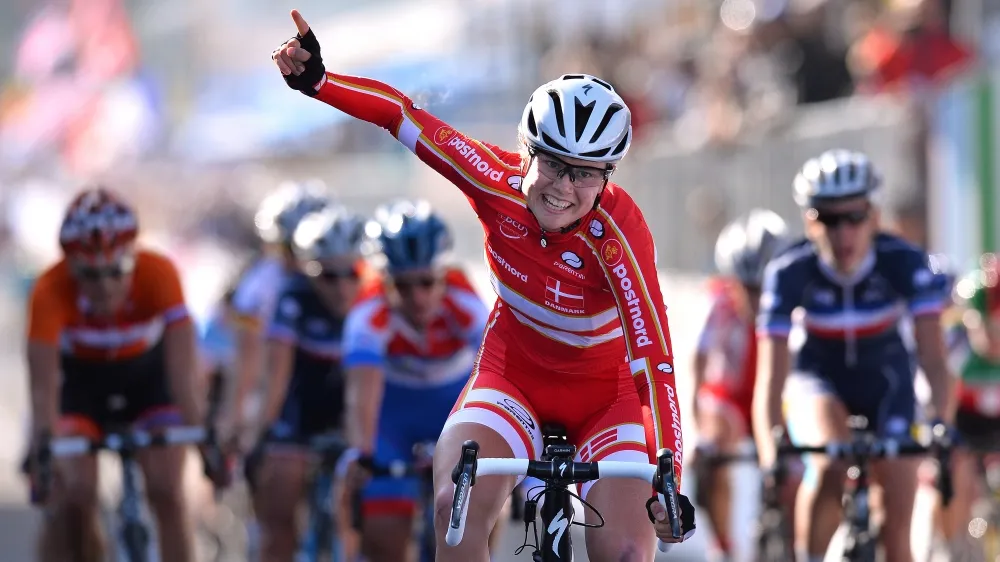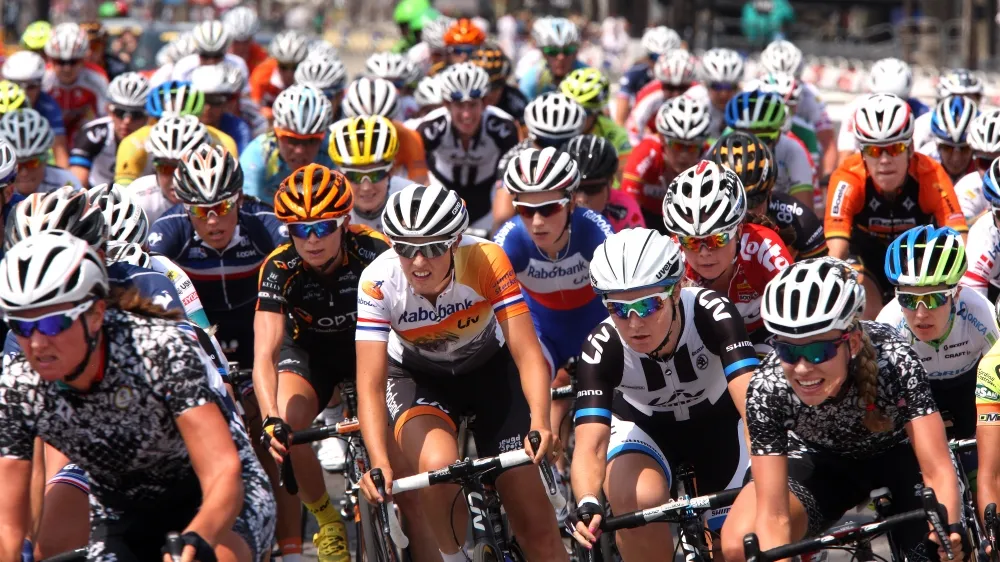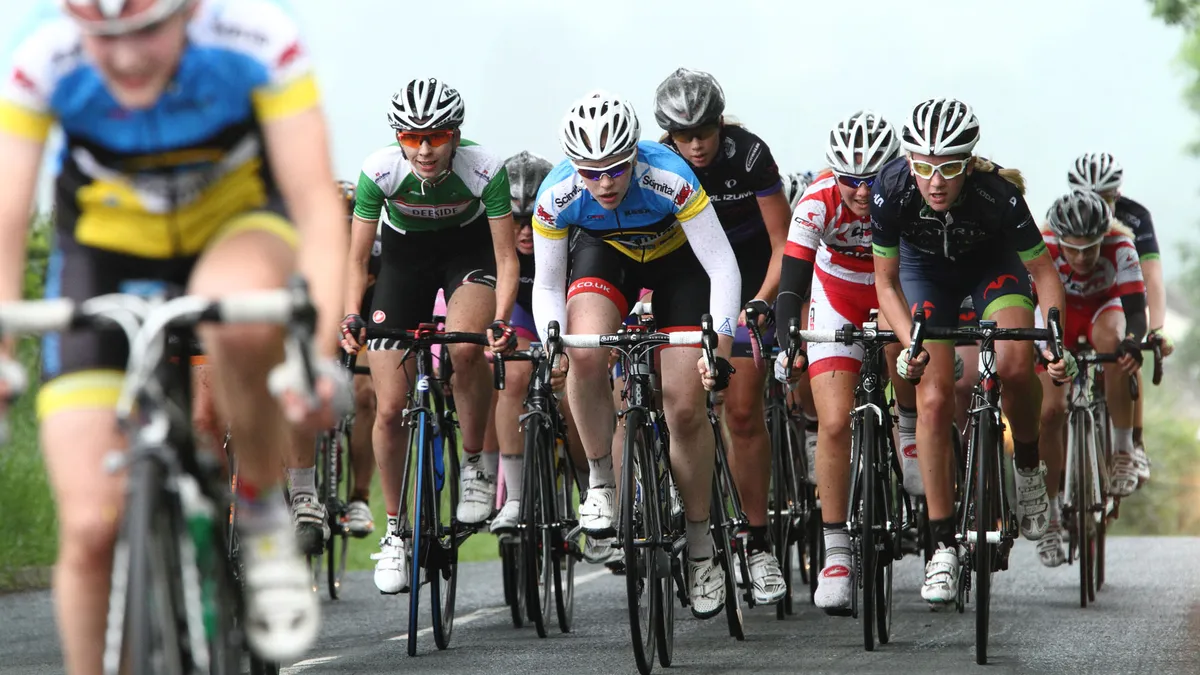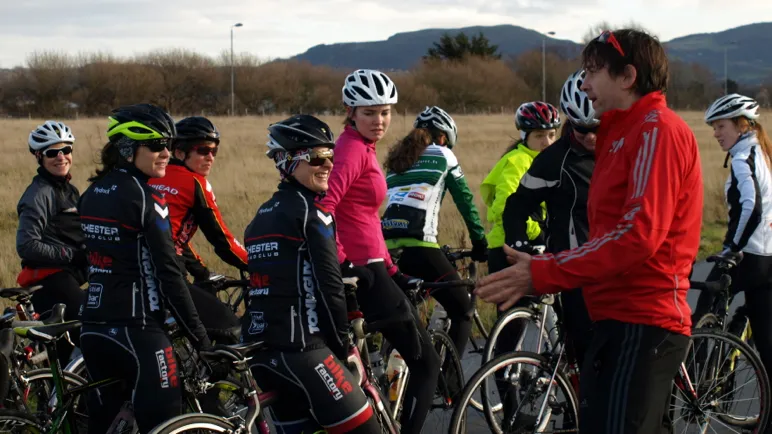While bike racing for beginners may seem intimidating, it's an excellent way to push your riding to the next level, improve your skills and increase your fitness, particularly if you have a competitive nature.
For many a cyclist, racing is the ultimate exhilaration. It's also one of the best ways to measure yourself against others says Rochelle Gilmore, owner of the Wiggle-Honda pro cycling team.
“There’s just nothing like the feeling of ticking a box of achievement you’ve set for yourself," she tells BikeRadar. You can, of course, do that by setting goals that don’t involve racing but it’s so satisfying to see your development against other people. It’s natural to want to be better every week and I think once you get through your first and second race it becomes addictive.”
Usually, before you can pin on a number and head to the start line, you’ll need a racing license. These are available from your national cycling governing body, and membership will typically also provide insurance cover. In the UK, the governing body is British Cycling; in the US it’s USA Cycling and in Australia it’s Cycling Australia.
You’ll also need to decide whether you want to ride in crit or open road races. Crits, short for criterium races, take place over multiple laps, are held on closed roads or purpose-built cycle tracks and usually last around an hour. Road races are generally over longer distances with more varied terrain and gradients. There are also time trial events, which take place over different distances and can be individual events (ITT) or team events (TTT).
To find an event, ask members of your local club about races they recommend. Events are also listed online, on sites such as the British Cycling event calendar, which will also often allow online entry.
There are also organisations like the Racing Chance Foundation, a charity that aims to provide training and race opportunities for women of all abilities.
Training for road racing
As long as you’ve got a good endurance base, it’s not essential you deviate from your normal training to prepare for racing. But, says Wiggle-Honda sprinter Chloe Hosking, sprint intervals are good for recovering from the surges in pace and building your top-end speed.
“An example session is two sets of five ten-second sprints. I drop my pace down, put it in my set gear and I just have to go bang,” she explains.
During the week leading up to a race, Hosking recommends a greater focus on recovery. “I normally do a day on followed by a day off leading into a big event. I then do a standard pre-race-day-drill ride the day before.”

Getting comfortable with riding and racing in a group is critical
Essential skills for road racing
While anyone can have a go at racing, it’s vital you can ride in a group. “It’s such a huge part of it,” says Hosking. “It doesn’t matter how strong you are, if you can’t sit in a peloton you’ll find it extremely difficult.”
It’s all about having the confidence to stand your ground, adds Gilmore.
“As a racer, before you put yourself into the bunch the number one thing is you have to be mentally prepared to not let people push you around and push you off wheels. If people come in and you drift back then you have to work to come back to the front again and if you’re doing that the whole race it’s really tiring. You can’t feel good at the finish if you’ve just been pushed around all day.”
Related: Video - Advanced group riding essentials

Learning to hold your own in the peloton is a key skill
Essential equipment for road racing
At a basic level, you’ll need a helmet, gloves, jersey, shorts, clipless shoes, bidon and of course a bike. Depending on the race type, duration and conditions, you may also need to carry things like a thin race-shell jacket and energy gels.
A standard road bike will suffice for the majority of races if you're just getting started. Ensure you remove accessories such as lights and saddlebags to keep it as light as possible. As you progress, you may want to upgrade to a lighter bike with more race-specific geometry and design.
There is a wealth of race-specific cycling equipment on the market, such as aerodynamic helmets and lightweight clothing, which can also help reduce weight, decrease wind resistance, and can help improve performance.
Overcome fear
It’s understandable that the thought of riding in a tight group at high speeds can be intimidating, but Rochelle says a bit of logical thinking can help you overcome the fear of crashing. “Think about the road surface, how fast the pace is going to be and what the likelihood is of being seriously injured and try to remove the fear mentally that way.”
She also advises practising riding close together with one or two friends to get used to the feeling of making contact. “Ride shoulder to shoulder, touch elbows and then when you’re in a race you’re not so scared of that, you know your bike isn’t going to twitch.”
Once in a race, you can help yourself to avoid crashes. “Be very alert in the race about other people who are more inexperienced,” says Rochelle. “The general rule is if you stay near the front, in the top five or ten riders, then you’re a bit safer and have a little more control, plus you’re generally with more experienced riders in that position.”
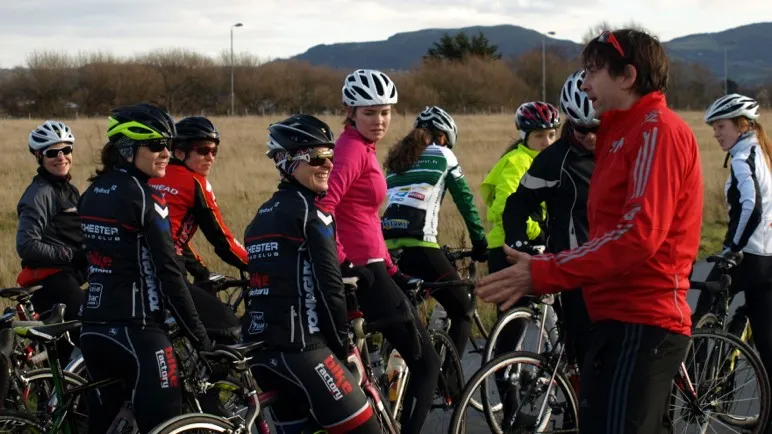
Training and advice sessions can help you prepare and improve. The Racing Chance Foundation in the UK offers training and support for women of all abilities
First race advice
Chloe advises to approach your first race with the aim of having fun. “Don’t put any unnecessary pressure on yourself. Start racing and then set yourself achievable goals once you’ve got a baseline to work off.”
For best positioning, Rochelle says to aim for the third or fourth wheel and, if you’re comfortable there, to keeping fighting for that spot. “That’s with your elbows and hips. Also remember to keep pedalling, get out of the saddle, and make space – own that position basically, don’t let anyone take it from you.”
But do bear in mind there is such thing as racing etiquette and you shouldn’t be doing anything that endangers you or the people around you. “Try to hold your line and don’t ride too erratically,” says Chloe. “The main thing is safety. At the end of the day we all want to go home with most of, if not all of, our skin on.”
Racing tactics and experience

It's not just about fitness – race craft includes learning to read subtle signs and signals that may indicate an attack is about to happen
While you still need your legs to cooperate, successful racing is often down to tactics as much as fitness. “That’s one of the reasons I love cycle racing,” says Hosking. “It’s not always the strongest rider who wins, but often the smartest. Knowing when to save energy and when to exert it is so important.”
Part of that, she says, is down to being able to read a race. “It’s almost like a Hollywood movie. A change in music is a cue something is about to happen. Changing gears is the same thing. If you see someone making their gear bigger, nine times out of ten they’re about to attack you, so get ready! The more you race, the more cues you’ll learn.”
Learn, enjoy and go again
If your first experience doesn’t go so well Chloe says you shouldn’t be put off. “Unless you’re Marianne Vos you’ll lose more races than you will win, so don’t let one bad race ruin what could be an exciting adventure. You can get so much satisfaction from racing, so don’t give up too easily. We’re not all naturals!
“Even if I could enter my first race with the knowledge I’ve got now I wouldn’t want to. That’s because I love looking back on races I did and comparing how much I’ve learnt and developed as a cyclist and athlete. Learning from your mistakes is all part of it.”
Chloe also advises to race again as soon as possible. “The more racing you do the better – the only way to improve is to keep getting out there.”

